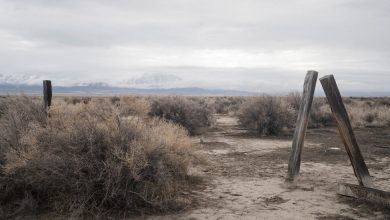5 Takeaways From the U.N. Report on Limiting Global Warming

Nations are not doing nearly enough to prevent global warming from increasing to dangerous levels within the lifetimes of most people on Earth today, according to a new report by the Intergovernmental Panel on Climate Change, a group of researchers convened by the United Nations. Limiting the devastation won’t be easy, but it also isn’t impossible if countries act now, the report says.
The panel produces a comprehensive overview of climate science once every six to eight years. It splits its findings into three reports. The first, on what’s driving global warming, came out last August. The second, on climate change’s effects on our world and our ability to adapt to them, was released in February. This is No. 3, on how we can cut emissions and limit further warming.
Without swift action, we’re headed for trouble.
The report makes it clear: Nations’ current pledges to curb greenhouse-gas emissions most likely will not stop global warming from exceeding 1.5 degrees Celsius, or 2.7 degrees Fahrenheit, within the next few decades. And that’s assuming countries follow through. If they don’t, even more warming is in store.
That target — to prevent the average global temperature from increasing by 1.5 degrees Celsius over preindustrial levels — is one many world governments have agreed to pursue. It sounds modest. But that number represents a host of sweeping changes that occur as greenhouse gases trap more heat on the planet’s surface, including deadlier storms, more intense heat waves, rising seas and extra strain on crops. Earth has already warmed about 1.1 degrees Celsius on average since the 19th century.
Emissions are tied to economic growth and income.
So far, the world isn’t becoming more energy-efficient quickly enough to balance out continued growth in global economic activity, the report says.
Carbon dioxide emissions from factories, cities, buildings, farms and vehicles increased in the 2010s, outweighing the benefits from power plants’ switching to natural gas from coal and using more renewable sources such as wind and solar.
On the whole, it is the richest people and wealthiest nations that are heating up the planet. Worldwide, the richest 10 percent of households are responsible for between a third to nearly half of all greenhouse gas emissions, according to the report. The poorest 50 percent of households contribute around 15 percent of emissions.
Clean energy has become more affordable.
The prices of solar and wind energy, and electric vehicle batteries, have dropped significantly since 2010, the report finds. The result is that it may now be “more expensive” in some cases to maintain highly polluting energy systems than to switch to clean sources, the report says.
In 2020, solar and wind provided close to 10 percent of the world’s electricity. Average worldwide emissions grew much more slowly in the 2010s than they did in the 2000s, partly because of greater use of green energy.
It wasn’t obvious to scientists that this would happen so swiftly. In a 2011 report on renewables, the same panel noted that technological advances would probably make green energy cheaper, though it said it was hard to predict how much.
Still, altering the climate path won’t be easy or cheap.
The world needs to invest three to six times more than it’s currently spending on mitigating climate change if it wants to limit global warming to 1.5 or 2 degrees Celsius, the report says. Money is particularly short in poorer countries, which need trillions of dollars of investment each year this decade.
Understand the Latest News on Climate Change
Deadly combination. Global warming is greatly increasing the risk that extreme wildfires in the American West will be followed by heavy rainfall, a new study has found, highlighting the need to be prepared for mudslides and flash floods after the flames from severe blazes are out.
Ice shelf collapses. For the first time since satellites began observing Antarctica nearly half a century ago, an ice shelf has collapsed on the eastern part of the continent. The 450-square-mile ice shelf was located in an area known as Wilkes Land; the loss occurred in mid-March.
A massive leak. Startlingly large amounts of methane are leaking from wells and pipelines in New Mexico’s Permian Basin, according to a new analysis of aerial data, suggesting that the oil and gas industry may be contributing more to climate change than was previously known.
Australia’s Great Barrier Reef. A wide stretch of the Great Barrier Reef has been hit by a sixth mass bleaching event, an alarming indicator that the area is under intense stress from the waters around them, which have been growing steadily warmer as a result of climate change..
Enduring drought. Drought conditions are likely to continue across more than half of the continental United States through at least June, the National Oceanic and Atmospheric Administration said. Nearly 60 percent of the continental United States is experiencing drought.
As nations drop fossil fuels, some economic disruption is inevitable, the report notes. Resources will be left in the ground unburned; mines and power plants will become financially unviable. The economic impact could be in the trillions of dollars, the report says.
Even so, simply keeping planned and existing fossil-fuel infrastructure up and running will pump enough carbon dioxide into the atmosphere to make it impossible to keep warming below 1.5 degrees, the report says.
There are other steps that could help and wouldn’t break the bank.
The report looks at a host of other changes to societies that could reduce emissions, including more energy-efficient buildings, more recycling and more white-collar work going remote and virtual.
These changes do not have to be economy-dampening chores, the report emphasizes. Some, like better public transit and more walkable urban areas, have benefits for air pollution and overall well-being, said Joyashree Roy, an economist at the Asian Institute of Technology in Bangkok who contributed to the report. “People are demanding more healthy cities and greener cities,” she said.
In all, steps that would cost less than $100 per ton of carbon dioxide saved could lower global emissions to about half the 2019 level by 2030, the report says. Other steps remain pricier, such as capturing more of the carbon dioxide from the gases that pour from smokestacks at power plants, the report says.
The world also needs to remove carbon dioxide that is already in the atmosphere. Planting more trees is pretty much the only way this is being done at large scale right now, the report says. Other methods, like using chemicals to extract atmospheric carbon or adding nutrients to the oceans to stimulate photosynthesis in tiny marine plants, are still in early development.
“We cannot ignore how much technology can help,” said Joni Jupesta, an author of the report with the Research Institute of Innovative Technology for the Earth in Kyoto, Japan. “Not every country has a lot of natural resources.”





